Managing Tillage in Agriculture

What characteristics does intercropping share with natural ecosystems?
Cultivating soil parallel to the slope of the land (straight up and down the slope) leads to rapid soil erosion. Simply by cultivating on the contours (across the slope) instead, farmers can greatly reduce soil erosion in hilly terrain and create interesting landscapes in the process (Figure 7.35a). In very steep terrain, terraces can retain sufficient soil to grow valuable crops. In some places, properly maintained terraces have sustained agricultural productivity on very steep slopes for many centuries (Figure 7.35b). Where wind erosion is a potential problem, farmers have planted windbreaks, which reduce the force of the wind (Figure 7.35c).
SEVERAL FARMING PRACTICES CAN REDUCE SOIL EROSION ON AGRICULTURAL LANDS

FIGURE 7.35 Cultivating and planting across the slope in hilly farmland, such as this farm in Pennsylvania, helps reduce soil erosion. Terracing has prevented soil loss on very steep terrain where rice has been farmed for centuries in Southeast Asia. Windbreaks of trees are used extensively to reduce soil loss due to wind erosion.
(© Aerial Archives/Alamy) (SeenTheWorld/Shutterstock) (Erwin Cole/NRCS/USDA)
no-till (low-till) agriculture
An approach to growing crops involving reduced or no cultivation; creates less soil disturbance and leaves crop residues on the field.
Recent developments in agriculture are greatly reducing the intensity of cultivation and, as a consequence, the rate of erosion. These techniques, called low-till (till is short for “tillage”) or no-till agriculture, create less soil disturbance and soil compaction and leave crop residues on the field. Crop residues are parts of the crop that are not harvested for use, such as corn or wheat stalks; their roots provide structure to hold together the soil while leaf parts left on the soil protect it from erosion in the off-season.
Page 216
These methods also allow the soil to maintain more moisture. Low- and no-till agriculture techniques require specialized seeding equipment, such as seed drills, to effectively plant a crop (Figure 7.36) by placing seeds at the proper depth in the soil and the correct distance from neighboring seeds. In the absence of conventional tillage, farmers control weeds with herbicides or by planting cover crops of plants called green manure. While growing, green manure suppresses weed growth, prevents soil erosion, and where nitrogen-fixing plants are used as a cover crop, they add nitrogen to soils. When a farmer is ready to plant, the green manure is mown and left to mulch the soil, which adds organic matter and improves soil fertility.
NO-TILL AGRICULTURE REQUIRES SOME SPECIALIZED EQUIPMENT
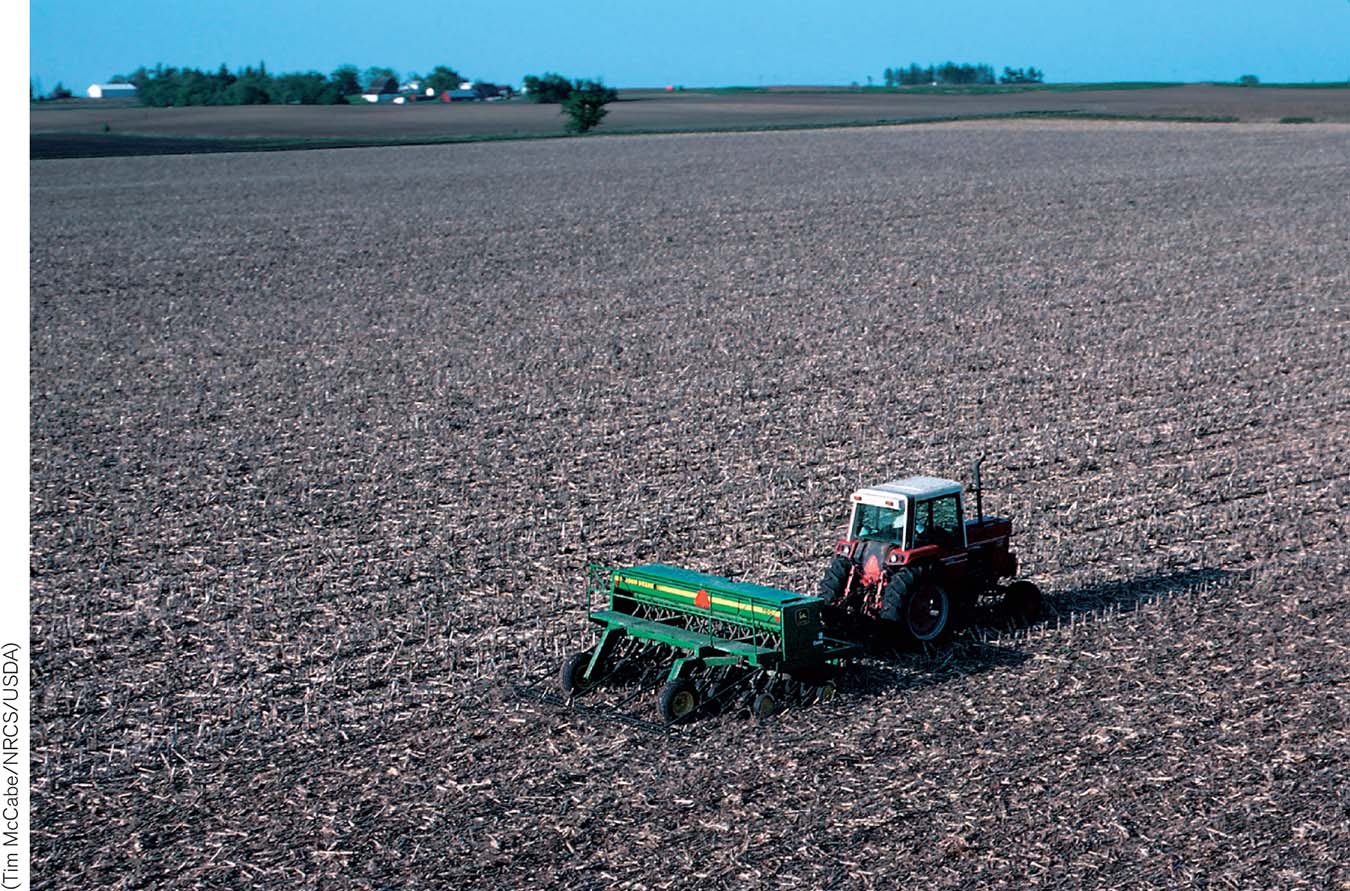
FIGURE 7.36 Agricultural engineers have invented equipment designed to address the special challenges presented by no-till agriculture; for example, the seed drill shown here plants a crop through a dense cover of crop residue and live noncrop plants.
(Tim McCabe/NRCS/USDA)
Page 217
Reduced tillage produces several improvements over conventional tillage, including lower rates of erosion, because crop residues physically shelter the soil surface from wind and rain. No-till agriculture has an average erosion rate one-twentieth of that associated with conventional tillage (Figure 7.37).
NO-TILL AGRICULTURE CAN REDUCE EROSION RATES SUBSTANTIALLY
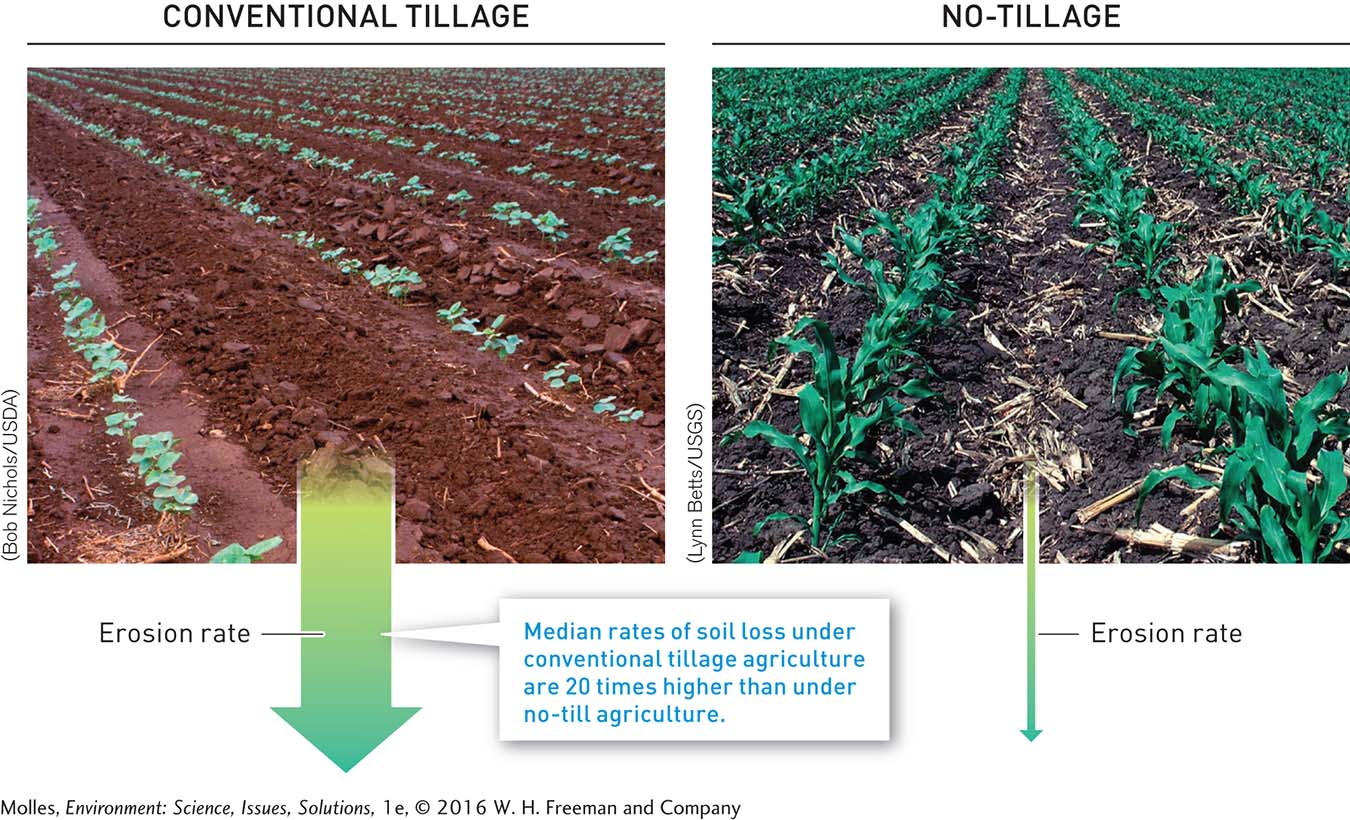
FIGURE 7.37 A comparison of median rates of soil loss by erosion from fields under conventional tillage shows that no-till agriculture lowers erosion rates dramatically. (Data from Montgomery, 2007)
(Bob Nichols/USDA) (Lynn Betts/USGS)
Organic Farming
Organic techniques can be used to produce food without expensive and unsustainable inputs of pesticides and herbicides. In the United States, organic food can be certified when the producer does not use synthetic fertilizer, pesticides, or GMOs. Critics of organic foods claim that organic crops are lower yielding because of higher loss to pests or decreased productivity from not using pesticides or synthetic fertilizers. However, a global study showed that organic methods can produce an almost equal amount of food as non-organic methods, indicating that organic agriculture can be a viable part of a sustainable agricultural solution.
Another trend related to organic farming is emphasizing local food production such as farmer’s markets and locally sourced products. These markets provide locally grown produce—that is usually also organic—directly to consumers. Advantages include reduced transportation and storage cost, since the food travels fewer miles, and eating foods just when they are locally in season means that those foods do not need to be grown in a greenhouse or imported when the product is out of season.
Livestock Stocking Rates and Resting the Land

How might no-till farming affect the biodiversity of soil organisms?
Raising livestock on rangelands can lead to desertification and soil loss. Sustainable ranching depends on putting the right number of livestock on a plot of land, based on the climate, soil type, and plant growth (Figure 7.38). Carefully managing stocking rates also reduces soil damage by compaction, which crushes soil pore spaces critical for plant growth. Studies have shown that “resting the land,” which involves removing livestock for some period, can reverse soil compaction. For example, two years of rest following 11 years of continuous grazing by sheep on pastures in Oregon was sufficient to reverse the effects of soil compaction, including the restoration of soil pore spaces, which are critical for soil aeration.
INTENSITY AND TIMING OF GRAZING ARE KEY TO SUSTAINING RANGELAND PRODUCTIVITY
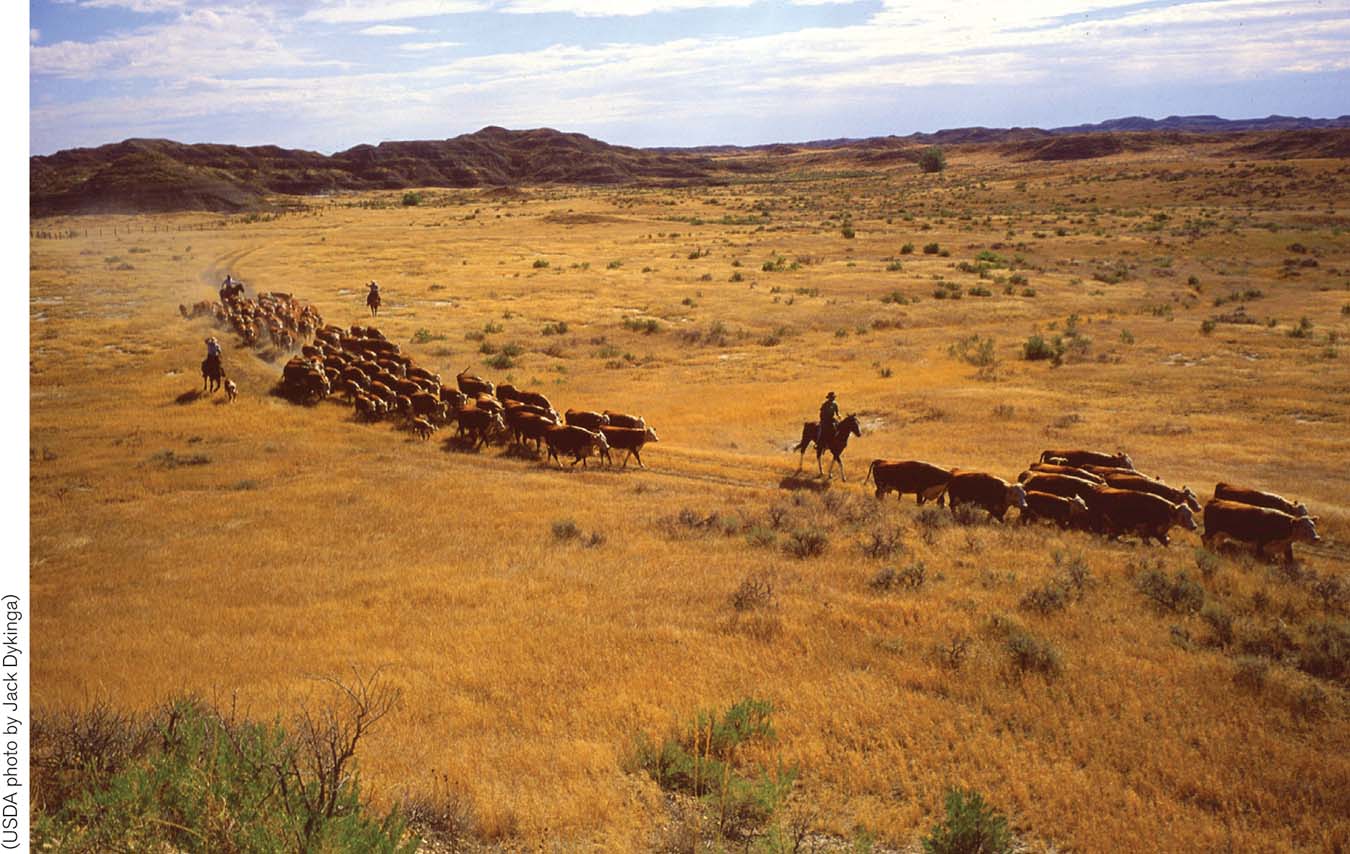
FIGURE 7.38 As shown on this healthy semiarid rangeland, carefully managing stocking rates can maintain plant cover, which greatly reduces rates of soil erosion.
(USDA photo by Jack Dykinga)
Page 218
Forest Harvest, Landscape Restoration, and Fire Management
Removes the tallest trees in a series of partial cuts, leaving behind enough of a forest canopy to provide shelter for speedy regrowth of shade-tolerant trees (e.g., red oak, American beech).
Forestry inevitably increases soil erosion. However, a number of practices can reduce soil loss. First, foresters should minimize the disruption of the land surface from heavy equipment and road building during logging. Timber harvests can be conducted in ways that reduce soil losses. More environmentally sensitive variations on clear-cutting involve leaving a few standing dead trees, for wildlife habitat or cutting only strips out of forests to reduce high winds and erosion. Shelterwood harvesting removes the tallest trees in a series of partial cuts, leaving behind enough of a forest canopy to provide shelter for the speedy regrowth of shade-tolerant trees, such as red oak or American beech.
selective logging The clearing of land for lumber that focuses on the most mature, high-value trees, leaving the forest ecosystem largely intact.
Another alternative to clear-cutting for timber is selective logging, which focuses on the most mature, high-value trees, leaving the forest ecosystem largely intact. Once an area is logged, restoring vegetative cover can greatly reduce soil losses. However, the key to reducing erosion on logged landscapes is to remove logging roads and restore the natural contours of the landscape, particularly at stream crossings (Figure 7.39).
ROADS IN MANAGED FORESTS ARE A MAJOR SOURCE OF SOIL EROSION
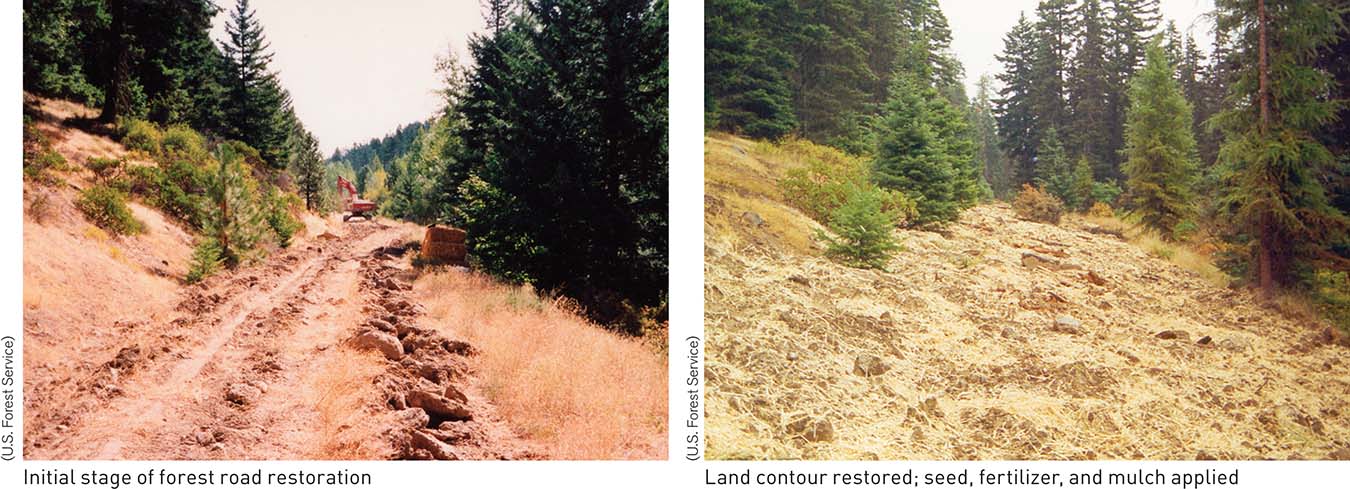
FIGURE 7.39 Closing roads and reestablishing vegetation on the natural slope of the land, as shown here, greatly reduce soil loss on logged forests.
(U.S. Forest Service) (U.S. Forest Service)
High-intensity forest fires often lead to catastrophic erosion (see Figure 7.20b, page 204), whereas low-intensity fires generally do not. Consequently, thinning the understory can reduce the intensity of forest fires, helping sustain forest soils and the forest itself. The 2007 Angora Fire, which burned 1,243 hectares (3,072 acres) of forest in the Lake Tahoe Basin on the border between California and Nevada, provided a dramatic demonstration of how vegetation management can reduce forest fire intensity. By coincidence, the Angora Fire burned 194 hectares (479 acres) of forest that had been thinned to reduce the danger of intense fire, while the remainder of the fire swept through forest that had not been thinned. The difference in fire intensity and tree mortality was stark (Figure 7.40).
REDUCING TREE DENSITY AND CONTROLLED BURNING OF DEAD WOOD CAN LOWER FOREST FIRE INTENSITY
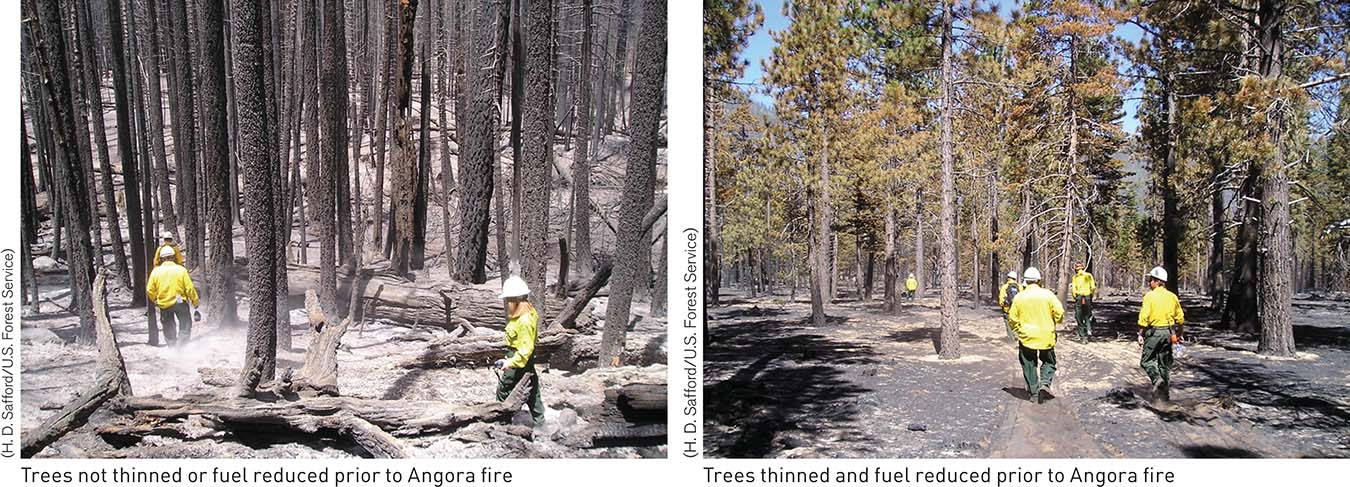
FIGURE 7.40 The first photo shows an area burned during the 2007 Angora Fire that had not been treated by thinning and fuel reduction and where no trees survived the fire. Compare this to the second photo of a treated area burned in the fire, where 90% of the trees survived and where the fire burned mainly along the ground and not in the canopy. (Data from Safford et al., 2009)
(H. D. Safford/U.S. Forest Service) (H. D. Safford/U.S. Forest Service)
Page 219
In areas where the forest had been thinned and the density of fuel reduced, tree survival was over 85%, compared with only 22% survival in areas that had not been thinned. The lower-intensity fire that resulted from forest management ultimately left more living trees, which reduced the potential for soil losses from erosion. Periodic controlled burning of forests can reduce buildup of fuels capable of creating severe fire conditions and can thus reduce the chance of massive soil loss following an intense wildfire.
An Ancient Practice That Sustains Soil Fertility
terra preta Dark, fertile soils high in charcoal and nutrient content, created by native populations in the Amazon River Basin before the arrival of Europeans.
Though tropical forests in the Amazon River Basin are lush, their soils tend to be infertile, making them largely unsuitable for agriculture (see Figure 7.6, page 195). However, soil scientists and archaeologists have noticed that the Amazon Basin is dotted with large patches of dark, fertile soils called terra preta, which literally means “dark soil” in Portuguese. Many areas of terra preta were in continuous cultivation for centuries, and although abandoned long ago, they are still capable of producing twice the crop yield per hectare compared with nearby, unaltered rain forest soils.
How were these islands of fertility created and by whom? It turns out that native populations of the Amazon Basin added organic matter and nutrients in the form of wastes from fish and game harvested from the surrounding landscape, along with human wastes and an abundance of charcoal (Figure 7.41). Rather than slash-and-burn agriculture, which releases a significant amount of carbon dioxide into the atmosphere, these people conducted slash-and-char agriculture, using low-heat fires to produce charcoal structures, which are ideal for holding nutrients within soils so that they are not washed out by heavy tropical rains.
AN ANCIENT PRACTICE SUSTAINED FERTILITY OF RAIN FOREST SOILS
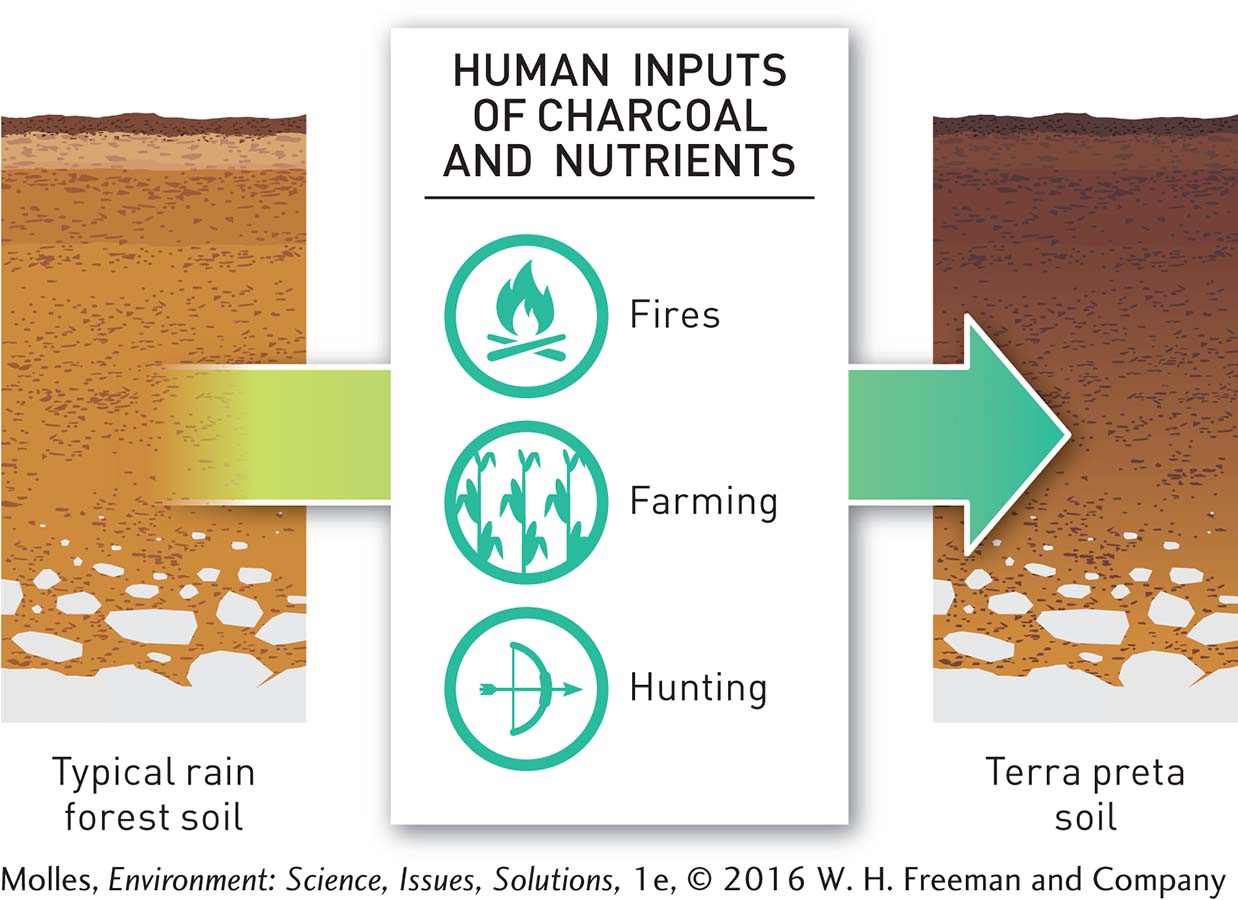
FIGURE 7.41 Fertile terra preta soils have developed in the Amazon Basin as a consequence of human activity associated with small urban centers dating as far back as 7,000 years before the present.
In fact, these charcoal deposits in terra preta soils have inspired scientists around the world to begin experimenting with the use of biomass to produce charcoal, so-called biochar, as a soil additive (Figure 7.42).
AN OLD TECHNIQUE IS BEING USED TO SUSTAIN SOIL FERTILITY
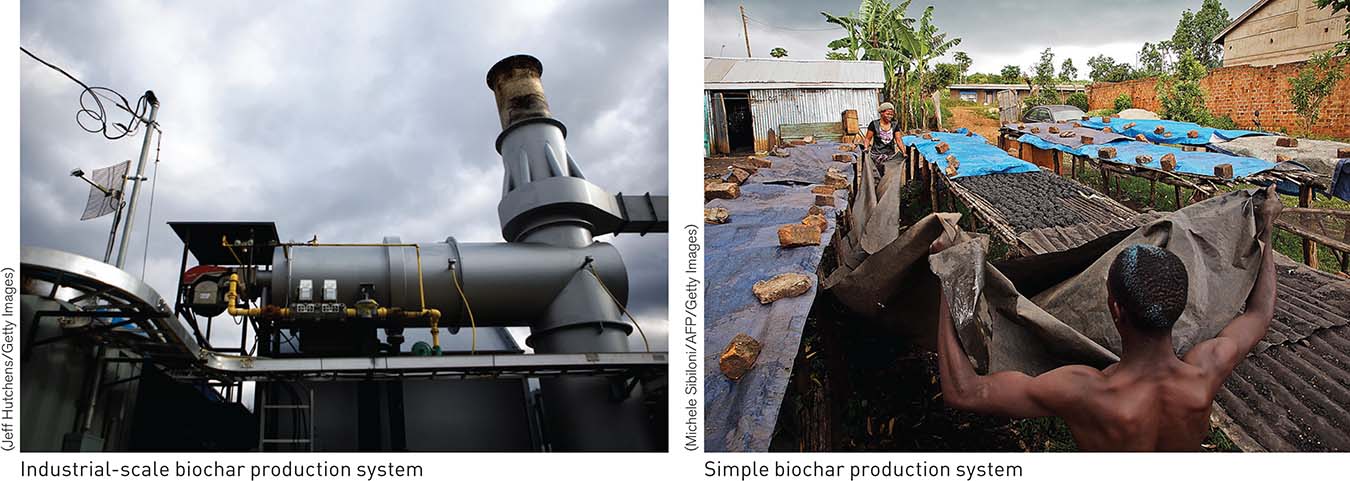
FIGURE 7.42 Modern technologies for producing biochar are developing rapidly. However, simple small-scale systems are also capable of producing this effective soil additive.
(Jeff Hutchens/Getty Images) (Michele Sibiloni/AFP/Getty Images)
Page 220
Think About It
Name ways we can practice agriculture and still sustain our soils.
How would you balance the benefit of reduced soil erosion under no-till agriculture against the potential environmental costs associated with applying chemical herbicides?
While wildfires are generally considered a destructive force, explain how excluding fire from some ecosystems can also be considered a disturbance and a destructive policy.
What other soils might benefit from the ancient practice of incorporating charcoal similar to the terra preta soils of the Amazon Basin? (Hint: Consider Figure 7.6, page 195.)









